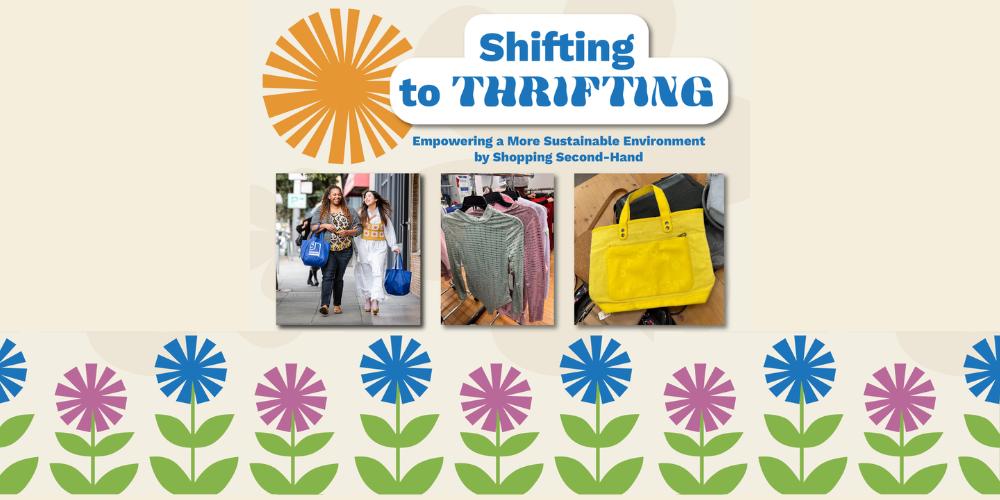— Empowering a More Sustainable Environment by Shopping Second-Hand
With Earth Day coming up on April 22 we’ll all be reminded to evaluate our everyday choices and consider what impact they have on the environment. There are so many ways to celebrate the beauty of the planet, like spending time walking outside, cleaning up litter on a beach or local park, and taking the time to learn about environmental issues. This is more important than ever this year, as the health of our environment has been at the forefront of conversation throughout what has been the warmest winter on record in some places, and the most catastrophic with bizarre fluctuating temperatures and dangerous storms in others. Together, we can invest in the Earth and take part in this year’s Earth Day theme, Invest in Our Planet.
Earth Day encourages us all to act boldly, innovate broadly, and implement equitably towards the dream of a clean and healthy planet. This is at the root of Goodwill’s mission to amplify the message of environmental sustainability through “Reduce, Reuse, Recycle.” Goodwill is the middleman of a donation-based circular economy of clothing and household goods and being green is an underlying philosophy of all the organization has done for more than 100 years.

Many of us learn about the “3 Rs” in grade school, but how we can apply this later in life might get lost. Donating and shopping at Goodwill is one of the easiest ways to do this, because in doing so, you set in motion a chain of events that keeps items out of landfills, which further pollute our land, air and water, and keep them in a circular economy. Donating still usable items is a method of instant recycling, which at its core means using items more than once, maybe even for a different purpose. Donating to Goodwill not only supports wider environmental goals, but also people in local communities, who can be offered job training and employment to keep Goodwill’s mission going strong by sorting through donations, managing technology, and interacting with shoppers in store every day. Useable items in fair to new condition can still be sold at Goodwill, whether at a local store or at a Goodwill outlet, also known as “the Goodwill bins.”
While donating provides fuel for the circular economy, the most effective and sustainable way to have a positive environmental impact is by preventing new things from being produced or consumed. The best way to do this is by shopping second-hand first as much as possible. When you shop second-hand versus at a retail store, you’re signaling to big brands and corporations that demand for new items is not as high, causing them to reduce production. This choice is the most sustainable and affordable way to shop, and it’s fun to do too. You never know what you’ll find at Goodwill, which means you’re likely to not only find the thing you need, but so much more. In many cases, Goodwill is the last chance for reuse of an item, which means the more you contribute to the second-hand circular economy of donating and shopping, the more you’re helping to save the planet.
Help Goodwill spread some reeducation around the “3 R’s” this Earth Month as we shift our mindsets to be thrifting first. Tag us on Instagram at @goodwillakron for a chance to be featured on our page.
– Felicia Czochanski



